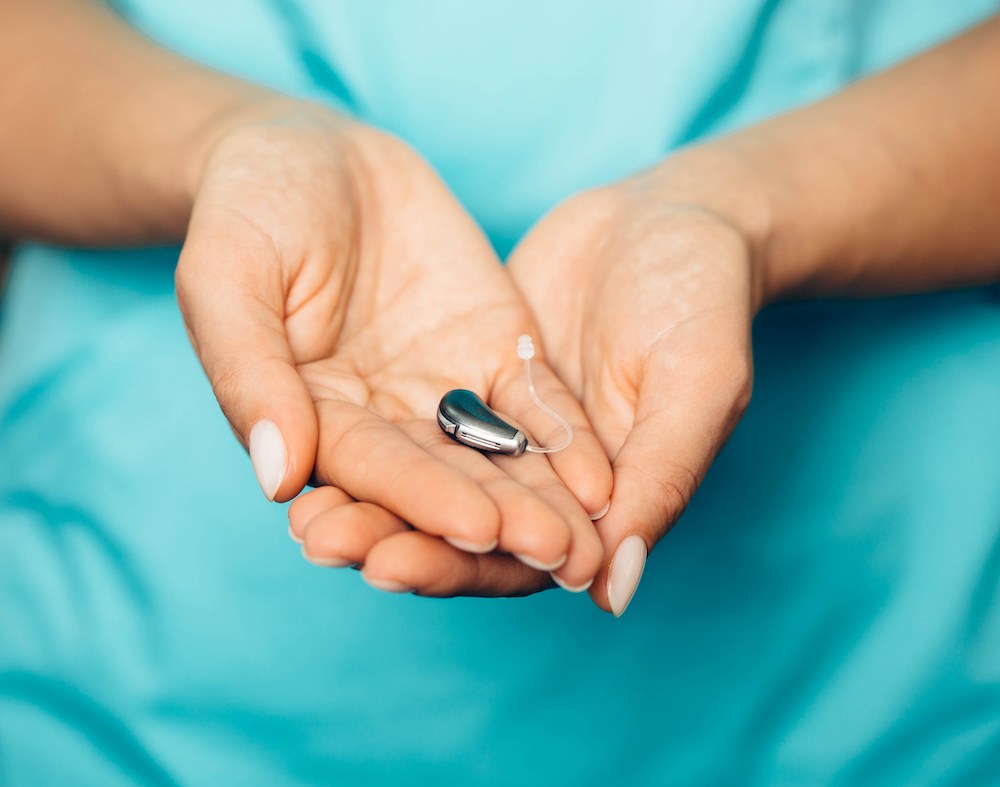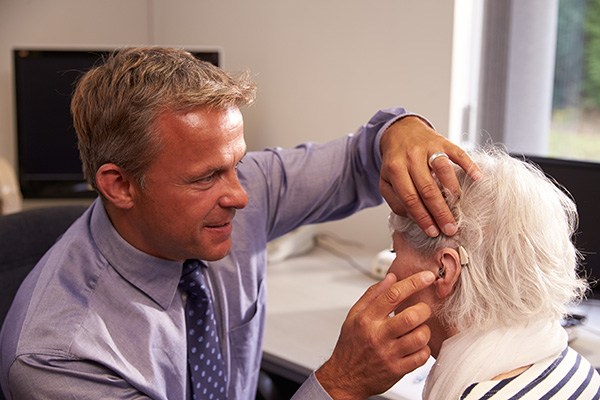The Role of Hearing Aids in Virtual Meetings
Virtual meetings have become a regular part of work and social life for

By: admin | September 24, 2025
For people who depend on their hearing aids throughout the day, the ability to wear them around water without constant worry has opened up new possibilities for active lifestyles. Whether you enjoy water sports, or simply want the freedom to shower without removing your devices, waterproof and water-resistant hearing aids have made it possible to maintain clear hearing in situations that were previously off-limits. This technology advancement in hearing aids means you can participate more fully in activities you love without having to choose between protecting your hearing aids and staying engaged in conversations and activities.
While waterproof hearing aids offer appealing benefits, they also come with considerations that are worth understanding before making a decision. Different models offer varying levels of water protection, and what works well for one person’s lifestyle might not be the best choice for another. Factors like your specific hearing needs, activity level and personal preferences all play a part in determining whether waterproof features are worth the investment.
Water-resistant and waterproof hearing aids are designed to protect your devices from moisture, but they do so in different ways and to different degrees. Water-resistant models are built to handle everyday exposure to sweat, light rain or humidity. They usually have stronger seals and coatings that help prevent moisture from entering sensitive components.
Waterproof hearing aids offer a higher level of protection and can withstand more direct contact with water. These devices are often designed to tolerate brief immersion in water, like when caught in a heavy rainstorm, accidentally dropping a hearing aid into a sink or using them near a poolside. While they are built for more extreme conditions than water-resistant models, it’s still important to follow manufacturer guidelines to prevent damage.
The choice between water-resistant and waterproof hearing aids ultimately depends on your lifestyle and how much time you spend in or around water. If you enjoy running, hiking or light outdoor activities, water-resistant devices are often sufficient. However, if you spend extended periods near water or participate in activities where splashes or immersion are likely, waterproof hearing aids may provide added peace of mind.
Waterproof hearing aids are built with special seals and coatings that keep water from reaching the delicate electronics inside. These devices use tightly sealed casings and protective layers to block out moisture. The main goal is to keep your hearing aids working even if they get wet during everyday activities.
Most waterproof hearing aids can handle rain, sweat or a quick splash in the pool. They are tested using international standards called IP ratings, which measure how well a device resists water and dust. A higher IP rating means better protection.
While waterproof hearing aids offer strong defense against moisture, it is still important to follow care instructions to help them last as long as possible.
Hearing aid IP ratings, or Ingress Protection ratings, indicate how well a device is protected against solids like dust and liquids like water. For waterproof hearing aids, the second digit in the IP rating is what matters most, as it reflects the level of resistance to moisture. A higher number means the device can handle more direct or prolonged exposure to water. These ratings give you a general idea of what activities your hearing aids can safely handle without damage.
IP ratings have two digits:
Manufacturers use controlled environments to test how well waterproof hearing aids resist water and dust. These tests follow strict guidelines and often involve submerging the device in water for a set period, then checking if it still works. Devices are also exposed to sweat, humidity and splashes to see how they perform in real-life situations.
Testing provides reliable results and clear ratings for buyers. However, real-world conditions can sometimes be tougher than lab tests, and repeated exposure to moisture over time may still affect performance.
Waterproof hearing aids are designed with materials that provide both durability and protection against moisture. The outer casing is typically made from high-quality, impact-resistant plastics that prevent water from reaching the internal components. Silicone seals are used at critical points, like battery compartments and buttons, to create tight barriers that block water entry. Some devices also feature specialized coatings on electronic parts that repel moisture and reduce the risk of corrosion over time.
These materials work together to safeguard the delicate electronics inside the hearing aid, helping the device continue functioning reliably even in damp conditions. The combination of sturdy plastics, protective seals and moisture-resistant coatings allows you to use your hearing aids during everyday activities like exercising, being outdoors in the rain or dealing with accidental splashes
Standard hearing aids that are not designed to be waterproof can develop problems when exposed to moisture. Water can damage the electronics inside and cause the device to stop working properly. Even small amounts of sweat or humidity may cause issues over time.
Corrosion is a common result when moisture reaches the metal parts inside a hearing aid. This can affect battery life, sound quality and may even cause the device to shut down unexpectedly. Moisture can also block microphones or speakers, making it harder for you to hear clearly.
If standard hearing aids get wet often, repairs or replacements may be needed sooner than expected. Keeping them dry and following care instructions helps prevent these problems.
Sweat and humidity are common in daily life, especially during exercise or on hot days. When sweat builds up around your ears, it can seep into hearing aids and affect how well they work. High humidity in the air can also make it easier for moisture to get inside the device.
Moisture from sweat or humid weather may cause static sounds, muffled audio or sudden shut-offs. Over time, this extra dampness can lead to corrosion of the metal parts inside your hearing aids. Corrosion makes it harder for batteries to work and can damage important circuits.
Waterproof hearing aids are designed to handle these problems better than standard models. Their special seals and coatings help keep out both sweat and humid air, so you experience fewer issues with sound quality or device failure during active days or in sticky weather.
Keeping waterproof hearing aids clean helps them work well and last longer. Even though these devices are built to resist water, they still need regular care to remove dirt, sweat and earwax.
Use a soft, dry cloth to wipe the outside of your hearing aids each day. Make sure all openings like microphone ports and battery doors are free from debris by gently brushing them with a cleaning tool made for hearing aids.
People who spend a lot of time around water or in humid environments may benefit most from waterproof hearing aids. If you enjoy swimming, boating or outdoor activities where your devices might get wet, these hearing aids can help you stay active without extra worry.
Parents of children with hearing loss often look for waterproof options because kids are likely to play outside, sweat during sports or forget to remove their devices before getting wet. Knowing your hearing aids are built to handle splashes and moisture can bring peace of mind in busy or unpredictable situations.
When considering waterproof hearing aids, it’s important to ask questions that help set clear expectations for how the device handles moisture. Understanding the level of water resistance can prevent misunderstandings and accidental damage, ensuring the hearing aid performs well in daily life. Discussing scenarios like rain, sweat or kitchen splashes allows a hearing health professional to explain what the device can realistically withstand.
Questions should focus on the practical use of the hearing aid in everyday situations. This includes asking about what types of moisture exposure are safe, how to care for the device after it gets wet, and what signs indicate it may need attention. Clear guidance from a professional ensures wearers can enjoy activities with confidence, without overestimating what the device can handle.
It’s also helpful to explore the device’s maintenance needs and warranty coverage in relation to moisture exposure. Knowing how to protect and care for the hearing aid can extend its lifespan and prevent repairs. Setting expectations around water resistance encourages responsible use and helps wearers feel informed and prepared.
Waterproof and water-resistant hearing aids allow you to stay engaged in everyday activities without worrying about moisture exposure. Knowing how these devices perform in typical situations, like rain or sweat, helps you understand what to expect and how to care for them effectively. This awareness ensures your hearing aids continue to function well while supporting an active lifestyle.
Selecting the right waterproof model involves considering your hearing needs alongside your daily routines. We can guide you through understanding the realistic limits of each device and proper maintenance to protect its performance. Contact Reach out to Beltone Hearing Care Center for expert guidance tailored to your situation and lifestyle.
Tags: benefits of hearing aids, hearing aid repair, hearing aid styles

Virtual meetings have become a regular part of work and social life for
By: admin | November 18, 2025

For people who depend on their hearing aids throughout the day, the
By: admin | September 24, 2025

Getting hearing test results can be confusing for most of us. Looking at
By: admin | May 23, 2025
